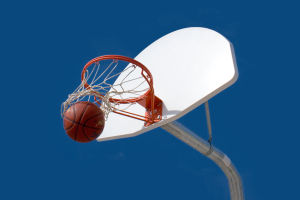Hey, Lykkers! Have you ever watched surfers ride the waves and felt the urge to try it yourself?
Today, we're diving into the world of surfboards to help you understand what makes each type unique and how to choose the perfect one for your next beach adventure.
Understanding Surfboard Types
The world of surfboards is vast, with a variety of shapes, sizes, and designs that each serve a specific purpose. From beginner-friendly boards to those for seasoned pros, there's something for every skill level and surf style. Let's look at some popular types of surfboards and what they offer:
1. Longboards: These are the classic surfboards, often 8-12 feet in length. Longboards are perfect for beginners because they provide excellent stability and are easy to balance on.
2. Shortboards: Known for their agility, shortboards are typically under 7 feet and are ideal for surfers looking to perform tricks and fast turns.
3. Fish Boards: These boards are shorter, wider, and have a “fish-like” tail, making them perfect for surfing in small to medium waves with a smooth, relaxed style.
Pro Tip: If you're new to surfing, a longboard is a great starting choice because it helps build confidence and technique.
5 Types of Surfboards | Surfboard Basics
Video by Howcast
Key Features to Consider When Choosing a Surfboard
Choosing the right surfboard isn't just about picking a shape or color; several important features make a board suited to a specific surfer. Here's what you should consider:
• Length and Volume: The size of the board affects buoyancy. Longer, high-volume boards offer more stability, while shorter, low-volume boards are more agile.
• Material: Surfboards come in a range of materials, including foam, fiberglass, and epoxy. Foam boards are ideal for beginners because they're light and durable, while fiberglass boards offer more control for experienced surfers.
• Fins: Fins impact the board's stability and direction control. Single fin boards are slower but stable, while three-fin (thruster) setups are more responsive for advanced tricks.
Quick Tip: For beginners, a foam or soft-top board with high volume is best; it's forgiving in the water and can handle bumps more easily.
Caring for Your Surfboard
Once you've chosen your surfboard, keeping it in top shape will help it last longer and perform well. Here's how to care for it:
• Rinse After Use: Saltwater can be tough on boards, so rinse your board with fresh water after each session.
• Store Properly: Keep your board in a shaded, cool area when not in use. Prolonged exposure to sunlight can cause discoloration and damage.
• Repair Dings Quickly: Even small dents or dings can lead to water damage, so repair any cracks promptly to maintain the board's durability.
Important Note: Proper care can extend your surfboard's life significantly, making it a more worthwhile investment in the long run.
Learning to Ride: Tips for Beginners
Now that you have your board, it's time to hit the waves! Here are a few beginner tips to get started:
1. Practice Paddling and Balance: Getting comfortable on the board before catching waves will improve your balance and control.
2. Start with Small Waves: Small waves are great for learning the basics without the challenge of more powerful surf.
3. Use a Leash: A leash helps keep the board attached to your ankle, preventing it from drifting away and keeping you safer.
Pro Advice: Don't rush to ride big waves right away; mastering smaller waves will build the foundation you need to progress confidently.
Finding the Joy of Surfing
Surfing is more than just a sport — it's a way to connect with nature and experience the ocean in a new, exciting way. With the right surfboard and a little practice, anyone can enjoy the thrill of riding the waves. So, Lykkers, next time you're at the beach, grab a surfboard, test the waters, and discover the joy of surfing!


